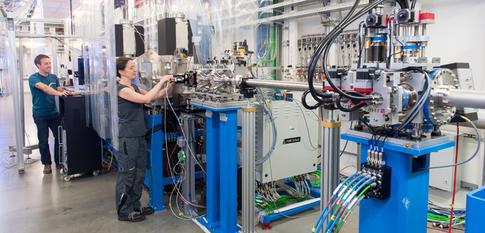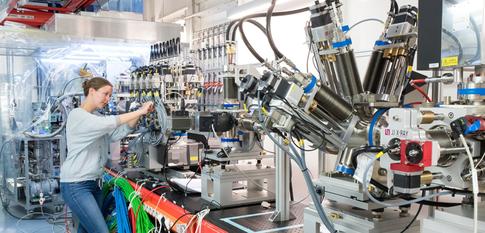XFEL: First users invited to European XFEL
First users invited to European XFEL
At European XFEL, a flurry of activity can be seen throughout the facility as staff prepare for the arrival of the first users in September. After years of development and construction, the world’s largest X-ray laser is now just weeks away from doing what it was designed to do: enabling scientists from across the world to push the frontiers of scientific knowledge.
Underground in the experiment hall, the first two instruments are now getting ready for the first users. The FXE (Femtosecond X-Ray Experiments) instrument, coordinated by leading scientist Christian Bressler, will enable the research of extremely fast processes. Here it will be possible to create “molecular movies” showing the progression of chemical reactions which, for example, will help improve our understanding of how catalysts work, or how plants convert light into usable chemical energy. The SPB/SFX (Single Particles, Clusters, and Biomolecules / Serial Femtosecond Crystallography) instrument, coordinated by leading scientist Adrian Mancuso, will be used to gain a better understanding of the shape and function of biomolecules, such as proteins, that are otherwise difficult to study.
More than 60 user groups answered a call for proposals issued in early 2017 for access to these two instruments. The project proposals were evaluated by international committees of experts on the basis of scientific merit and technical feasibility. The first 14 groups of scientists have now been selected and invited to carry out their ambitious research projects at the facility from September 2017.


